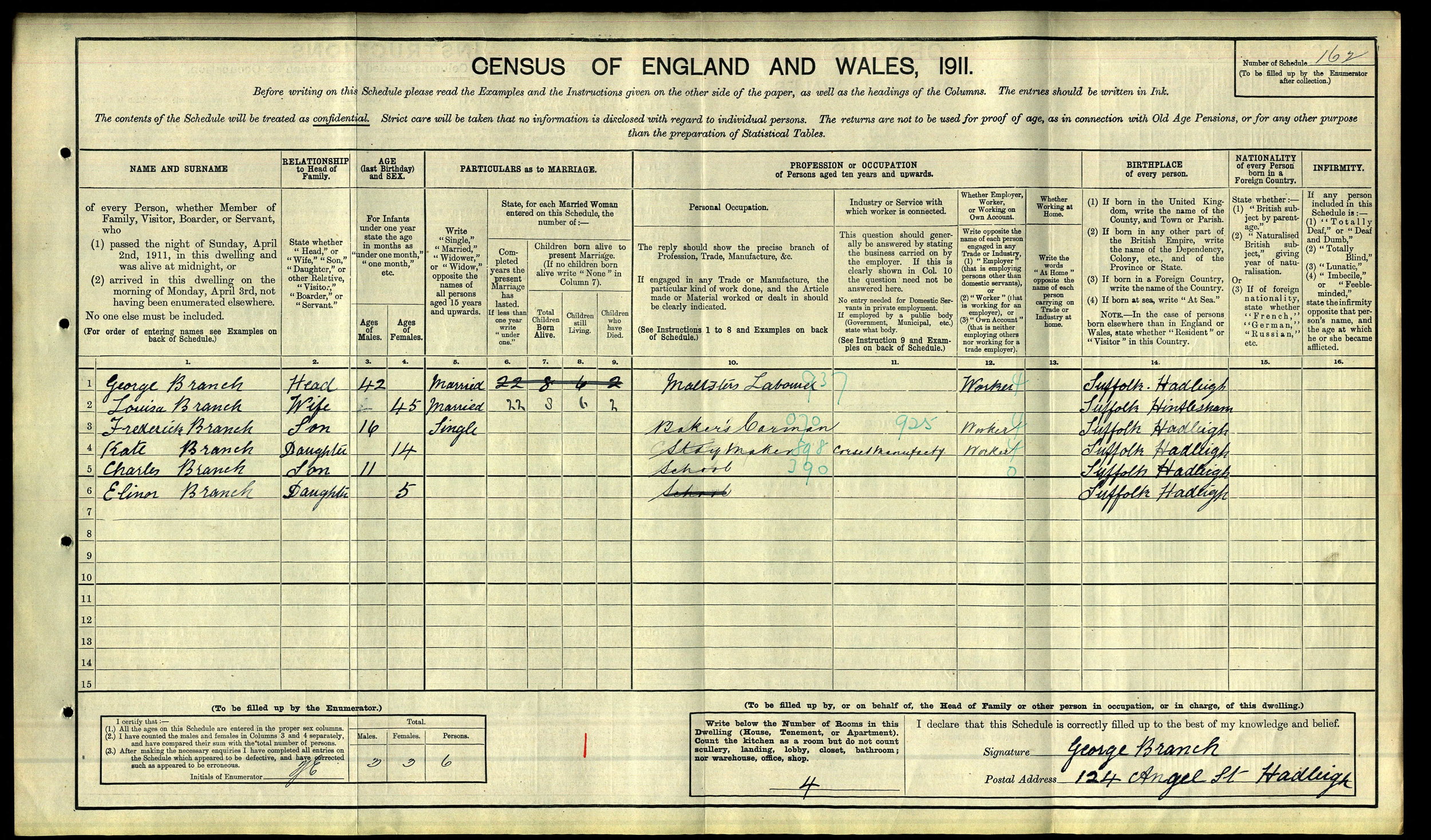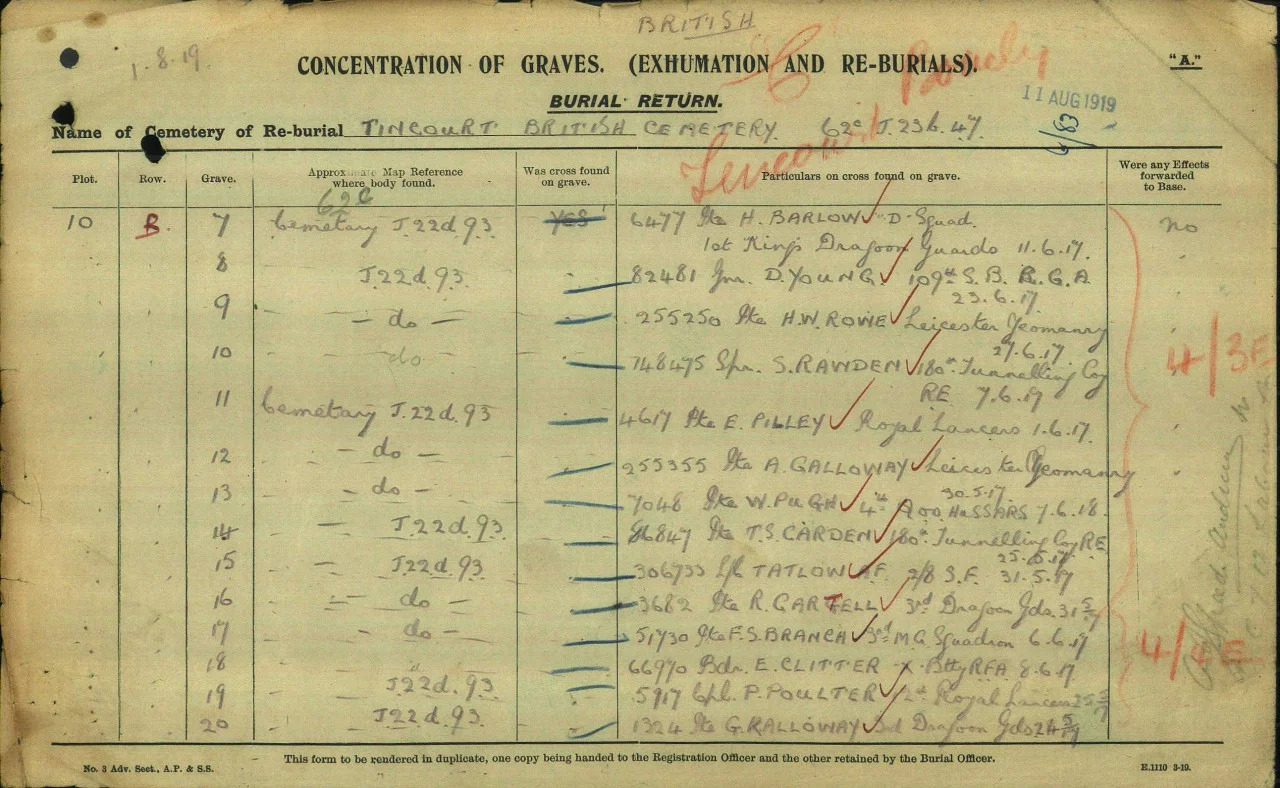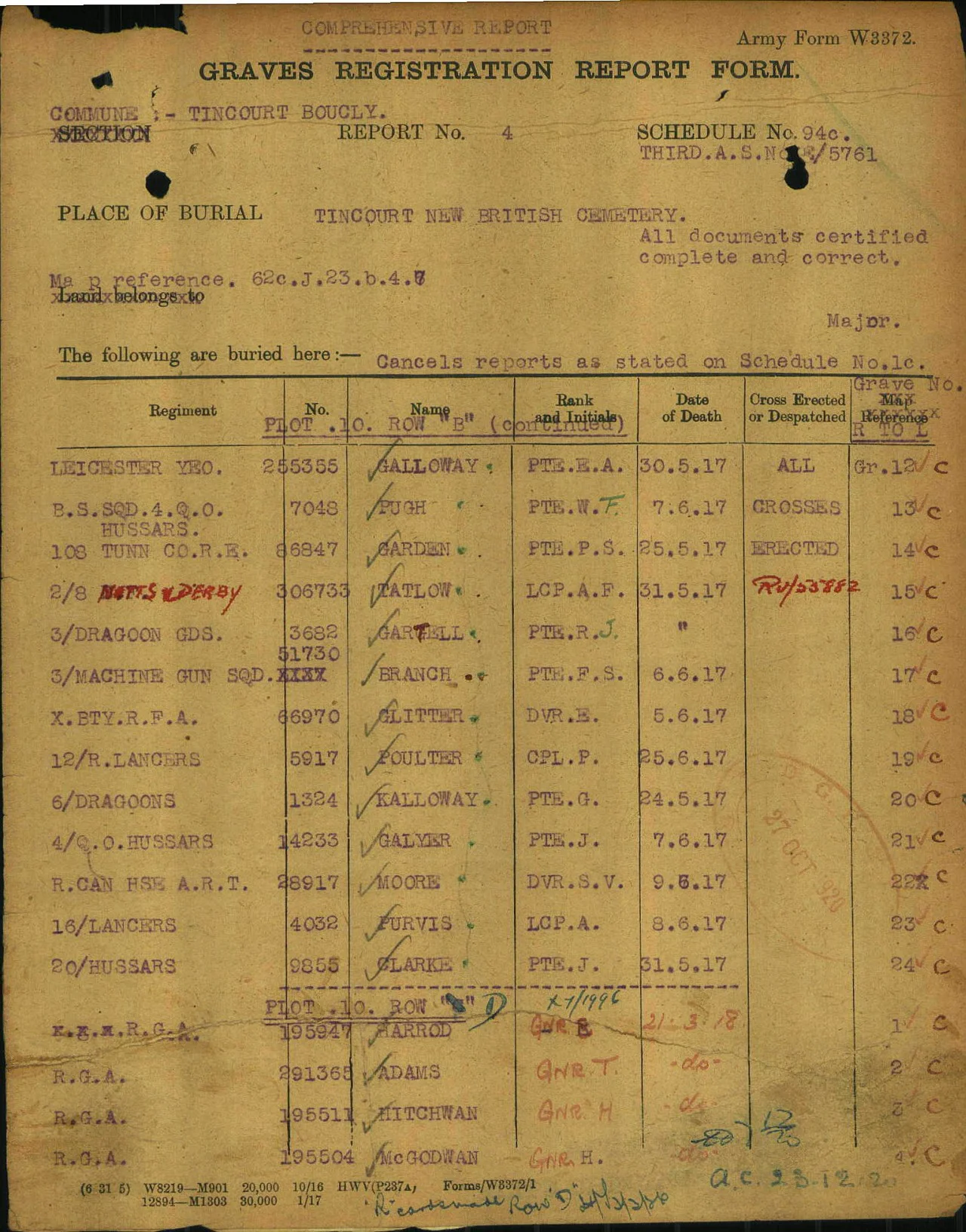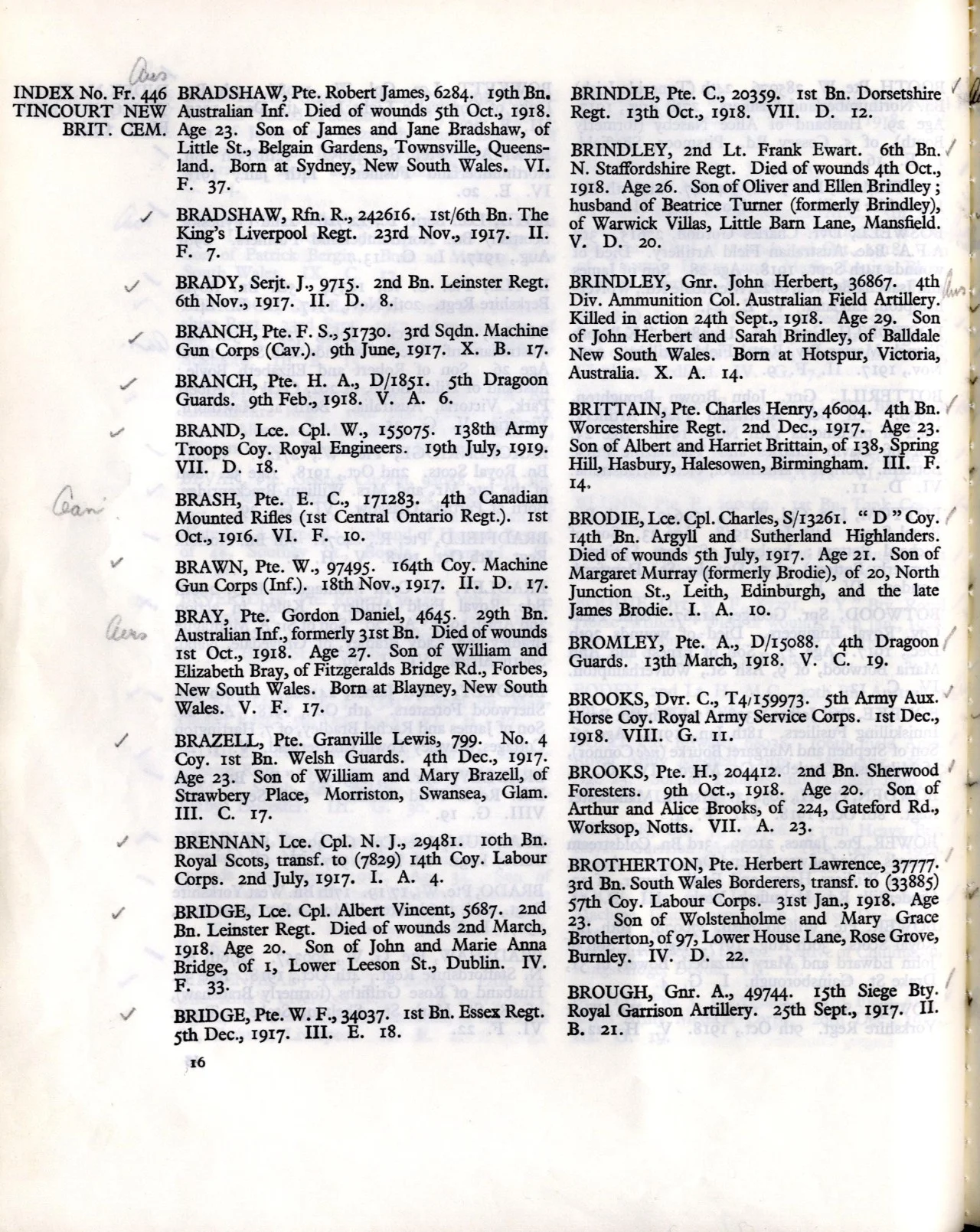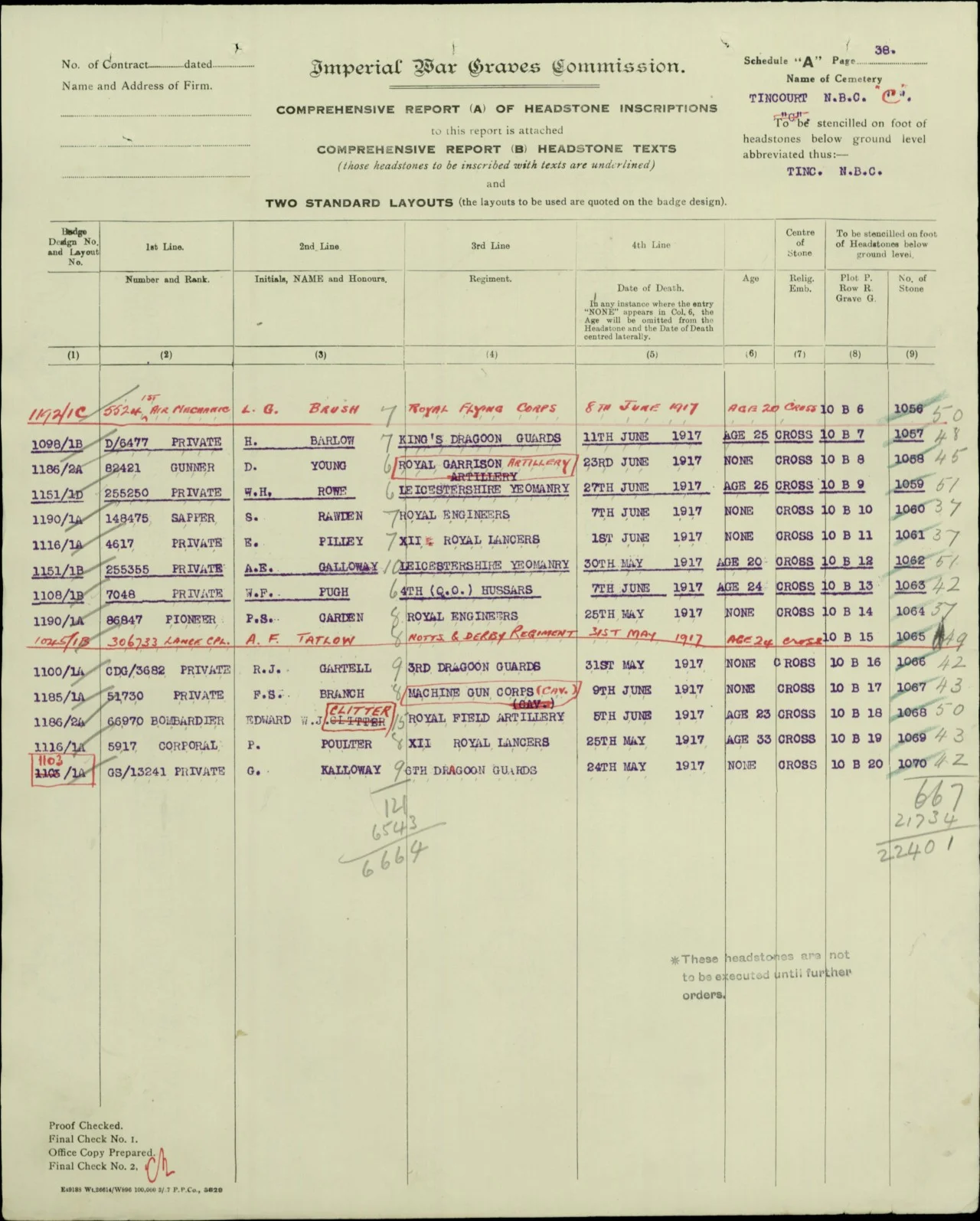Frederick Stanley Branch
Rank: Private
Service Number: 51730
Date of Birth: 1895
Regiment: 3rd Sqn Machine Gun Corps
Date of Death: 9 June 1917
Age at death: 22
Cemetery / Memorial: Tincourt New British Cemetery
Country: France
Grave / Reference: X. B. 17
Relatives: Son of George and Louisa Branch
Address: 124 Angel Street, Hadleigh
Frederick was born in Hadleigh in 1895. The 1911 Census report him as living at home with his parents and siblings; Kate 14, Charles 11 and Elinor 5 at 124 Angel Street, Hadleigh. Older brother Harry 20 and sister Vera 18 had left home at that time. In 1911 Frederick was aged 16 and was employed as a baker's delivery man.
Frederick's Medal Index Card
Fred’s unit stayed in the Loos area and took their turn in the trenches. The 4 Hussar’s war diary lists Fred as being wounded on 2 Jan 1916 whilst in trenches at Hulluch. He received a wound to his right arm. He was evacuated home to recover.
In July 1916 he was trained on the Hotchkiss machine gun and in October he returned to the 4th Hussars who were at that time on the Somme battlefield.
In April 1917 they took part in the Battle of Arras.
At some point he was transferred to the 3rd Machine Gun Corps (Cavalry) Squadron and was with them when he was wounded on 6 June 1917. The war diary reported that “Sgt Smart [was] killed, Ptes Wilks, Jessup, Branch [were] wounded - by bomb bursting at entrance to dugout”.
4th Hussars war diary details from 1-10 June 1917
and just 4 days later on 10 June, the war diary reported that “Pte Branch died of wounds”.
Private Frederick Branch
He enlisted before the war into the 4th Hussars, a cavalry unit. He was sent to the Western Front in May 1915 and in Sep that year his unit were held in reserve during the battle of Loos. It was hoped that once the infantry broke through the German lines, then the cavalry could be brought forward at speed to push through the gap and exploit behind the German lines. Unfortunately, the much needed breakthrough never happened.
Frederick was entitled to the above three medals. The whereabouts of his actual medals are currently unknown.
Once recovered he was sent to Ireland to join the 10th Cavalry Reserve and while there his unit were deployed onto the streets of Dublin to deal with the Easter Rising Rebellion in April 1916.
In a letter to his old headmaster, which was published in the Suffolk Free Press on 31 May 1916, Fred gives a great account of his experience during this historic event. He also stated that he was one of the escorts of the captured rebel leader, Countess Constance Markievicz.
We do not have any photographs of Frederick, however this photograph shows Countess Markievicz under arrest and being escorted by two British soldiers in what looks like the 4th Hussars uniform. It is possible that Frederick could be the one on the left
Frederick was buried close to where he died. (location J.22.d.9.3). After the war in August 1919 his body was exhumed by a Graves Recovery Unit and he was reburied at Tincourt New British Cemetery. He is also remembered on the Hadleigh War Memorial.
Kathleen Fox’s painting of the Markievicz surrender
Countess Markievicz was one of the Irish rebel leaders during the Easter Rising of 1916. She surrendered to the British Army outside the Royal College of Surgeons on St Stephen’s Green in Dublin. Kathleen Fox an Irish painter was present at the surrender and the painting she produced of the event now hangs in as part of a national art collection in Sligo museum.













